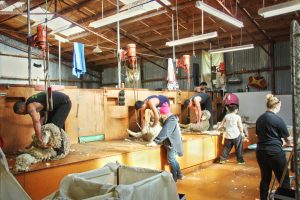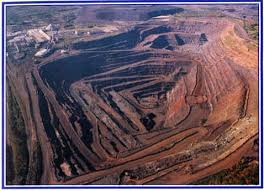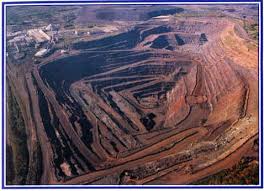Now that Australia has voted for “jobs and growth”, it will be useful to be reminded of its recent economic past. This piece (originally published in aggravations.org on 21 July 2016) explains the shift from woollen blankets to iron ore, and from Britain to China via Japan.
1945: the war ends. Industrialised nations switch from manufacturing munitions to the production of woollen blankets.

1952: Australian wool sells for a pound a pound. Graziers from the Western Division of NSW gather at the SCG for the final test against the West Indies. Richie Benaud takes his first test wicket.
1960s: increases in tariffs protect Australia’s industries and jobs, thus lowering the need for productivity improvements and innovation. Foreign investment therefore favours mining and agriculture because they are more exposed to international market prices and therefore more assured future profitability.
1962: Britain begins to flirt with Europe and abandons Imperial Preference in its trading relationships.
1966: Menzies retires.
1967: Japan overtakes Britain as the largest market for Australia’s exports.
1970: China accounts for 1 per cent of Australia’s total merchandise trade (imports and exports). Mineral and mining exports are 27% by value of the total.
1971: Wool prices are so low that all the pastoral zones are going to be emptied of people and properties. The crisis is so serious that economic historians from overseas are recruited to make sense of the situation.
1972: relationships with China are normalised. Its merchandise trade with Australia is valued at $100 million.
1974-75: Led by Lillian Thomson, Ian Chappell’s team regains the Ashes.
1982-83: Australia has the worst drought of the twentieth century. Someone suggests that instead of letting the inland blow away and blanket Melbourne (8 Feb. 1983) it could be dug up and sold to Japan. Australia’s mining boom is born.
5 March 1983: Bob Hawke breaks the drought and is rewarded by becoming Prime Minister.
1983-91: As Treasurer, Paul Keating hits upon some good ideas for the future of woollen blankets and mining exports. He reduces regulation and tariffs, floats the dollar and deregulates the banking system. The value of mining and minerals exports is 41% of the total.
1990: Norway establishes its Petroleum Fund “to counter the effects of the forthcoming decline in income and to smooth out the disruptive effects of highly fluctuating oil prices”.
May 1996 to May 2007: a series of Federal Budgets which trade on the world’s longest unbroken economic boom to give popular tax cuts to all, thus ensuring a structural budget difficulties for Some Time in the Future.
2006-07: the Ashes tests: Australia five, England nil.
2007-09: Howard and Costello leave and the Future arrives: the Global Financial Crisis sees Australia invest money it no longer has to successfully offset the employment effects of the GFC.
2011: Merchandise trade between China and Australia is valued at $114 billion – 25 per cent of the total.
2012: Australia’s mining boom ends prematurely.
2013-14: (It’s 5-0 again.) Mining and minerals account for 59% of Australia’s merchandise exports.

May 2014: Abbott and Hockey unearth a ‘budget emergency’ and plan to fix it with a Budget that not even their friends think is fair.
early 2015: Australia’s mining boom is not, after all, finished. It’s just ‘come off’ from its capital development and high prices phase to its production phase (greater volume of production but lower unit prices). As a result, the ‘budget emergency’ is no more.
later in 2015: But there is still a structural budgetary problem, since no government has been bold enough and sensible enough to expand the national tax base.
Monday 14 September 2015: PM Turnbull says there has never been a more exciting time to talk about new industries and jobs of the future, and innovation, agility, broadband and connectivity. Let’s hope he remembers that people outside the major cities need these things even more than those in the cities
May 2016: Norway’s petroleum fund has c$870 billion; is the largest stockowner in Europe.
Saturday 2 July 2016: It’s alright, don’t panic. We’ve gone for jobs and growth, jobs and growth, jobs a – –

